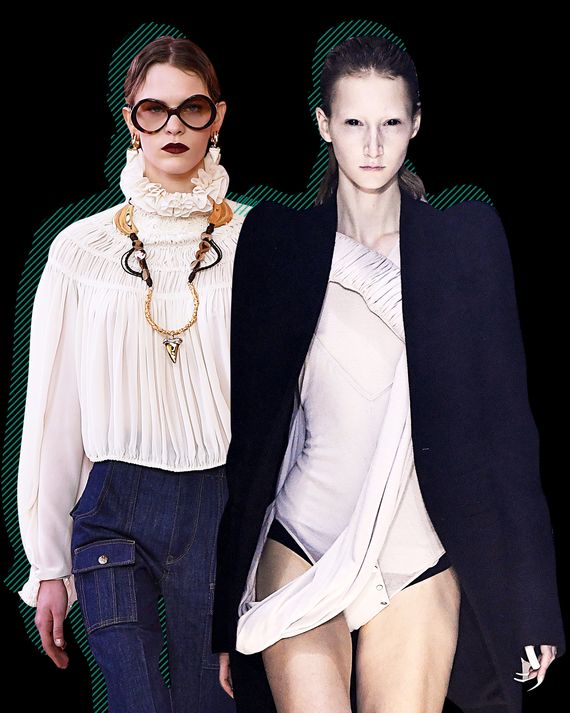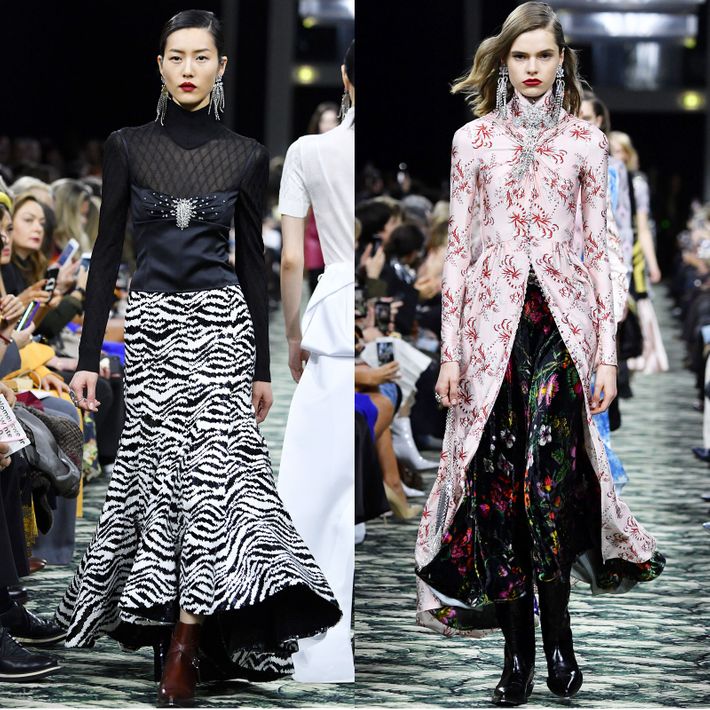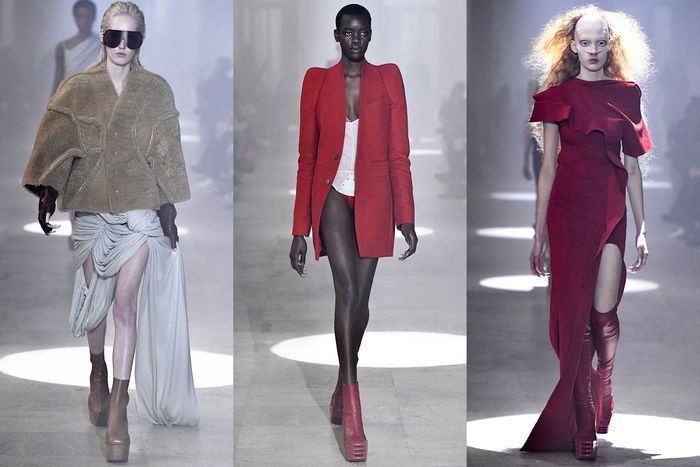
“I love fashion for fashion,” Karl Lagerfeld told Paris Vogue in 1982, a year before he went from Chloé to Chanel. “I love to change, to diversify, to create lots of looks, lots of styles, not be myself … be open to all.”
Coming from a man with an excess of clever remarks, the comment testifies to Lagerfeld’s extraordinary self knowledge. He was not the inventor of a look or a silhouette, like Vionnet and Balenciaga. He was, rather, the impresario of many looks. And as Nicolas Ghesquière said as he left the Chloé show yesterday, “He really invented the job that we designers have today.” Ghesquière meant that many designers now are hired guns — stewards of established brands like Chloé, where Ghesquière’s former assistant, Natacha Ramsay-Levi, has been the creative director for two years. Another protégé, Julien Dossena, is at Paco Rabanne, and of course Ghesquière himself is a star at Louis Vuitton, after an influential career at Balenciaga.
And because of the demands of today’s fashion world, those designers strive to be as versatile as Lagerfeld.
That was the sense of Ramsay-Levi’s excellent Chloé show, where the Paris Vogue quote from Lagerfeld was printed on one of several cards left on every seat. Her collection would have been prepared long before his death, last Tuesday, but it showed that she is trying to be more “open to all.” To me, her last collection of boho prints and dresses with a holiday-in-Morocco vibe suffered a bit from being too niche. But this time the offering felt more expansive, with lovely, loose-fitting dresses in silk prints or jacquards, romantic tops with yoke necklines and puffed sleeves (some shown with crisp, dark-blue jeans), and a substantial range of more tailored separates for women who aren’t into dresses.
That includes more interesting coats, like a cropped tartan puffer and a beautiful, vaguely swallow-tailor coat in navy wool; and more versatile skirts, like one in gray wool check with rows of off-center buttons that can be partially opened. One of my favorite skirts was a navy apron tied over a navy yoke-neck dress. It looked at once easy and romantic, minus the usual Chloé girlishness, and a little oddball.
Could Ramsay-Levi be lighter, breezier with her dresses? For sure. I also think her palette, which favors rusty tones, wine and plum reds, and smoky and dark blues, along with cream and black, is predictable. Perhaps she might take another tip from Uncle Karl and, for the sake of change (and customers’ desires), “not be herself” and surprise us with some different colors.
The 1930s and ’40s used to be a go-to era for contemporary designers, especially Hollywood glamour, so Dossena’s homage at Paco Rabanne was intriguing. The exaggerated patterns and textures — a sequined tiger-striped sheath paired with a turtleneck top whose pattern suggested Art Nouveau, an empress coat-dress in pink silk fanning open over a long, dark floral chiffon skirt, the crystal chandelier earrings — completely resonated with the theme of this year’s Met costume exhibit, drawn from Susan Sontag’s essay “Notes on Camp.” Maybe that’s the explanation for this odd trip. Anyway, “costume” is the key word for many of the outfits, which looked reworked from vintage pieces.
Jonathan Anderson is deft at blending cultural and sartorial references at Loewe. This season, his starting point was miniature cameo portraits dating from the European 16th century. But while there were some lovely white poetic blouses and strong pieces generally (especially the generous coats, lacy knits, and slouchy jeans), the show mostly meandered through the looking glass without giving a compelling message.
Lemaire also revisited historical shapes, notably jackets and soft dresses with leg-o-mutton sleeves, but the difference is that the designers, Sarah-Linh Tran and Christophe Lemaire, don’t get lost. Not only do their clothes look modern and individual, but they’re seldom predictable. Among the best looks were turtleneck dresses in jersey that nicely skimmed over the body, and relaxed blouson jackets with matching dresses (or skirts) in prints that even at close range looked like knits or woven fabrics.
As people contemplate Lagerfeld’s legacy in the days before the Chanel show next Tuesday, it’s worth noting that, though he was incredibly fluent in fashion and cultural history, the stuff of his imagination was for today. And he was continually updating his schtick.
The great Rick Owens is in the same class. His show last night was a breathtakingly modern view of glamour and at the same time it was pure Owens. No camp couture, though his makeup — by a talented artist from England named Salvia — was surreal, with alien faces and half-bald heads for some of the models.
Owens’s glamour came stripped to the bone: gorgeous, perfectly cut jackets and coats with peaked shoulders shown with flimsy bodysuits and huge platforms that evoked Kiss. The coats came in black, tobacco brown, and a deep, sexy shade of red — as did the boots. There were also cool fleece blousons, slinky leather cargo pants, and draped minidresses and wool gowns in Owens’s sculptural style, though fiercely pared down.
When I caught up later with Owens, at a party he was hosting for the authors of the monograph Charles James: The Couture Secrets of Shape, he said, “I don’t know how many past seasons I’ve been making these big blob things, which I love. Michèle” — his partner, Michèle Lamy — “looked at the new collection and said, ‘Wow, you got a big blast of heterosexual.’” The California-native shrugged as young fans waited for his autograph. “I think that’s a great compliment, for a women’s collection.”
He also had praise for Salvia, who’s only 18. “She’s so focused and there’s already this huge body of work” on Instagram. “I was working at Taco Bell when I was 18.”
Everyone’s got to start somewhere, right?







